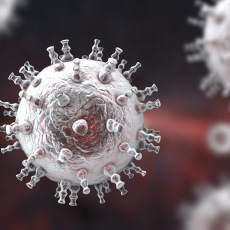Kaposi Sarcoma

Learn More
See, Play and Learn
Resources
For You
Summary
Kaposi sarcoma (KS) is a cancer that causes patches of abnormal tissue to grow under the skin, in the lining of the mouth, nose, and throat, in lymph nodes, or in other organs. These patches, or lesions, are usually red or purple. They are made of cancer cells, blood vessels, and blood cells.
KS is caused by infection with human herpesvirus-8 (HHV-8). Most people infected with HHV-8 don't get KS. It usually happens in
- People with weak immune systems, due to HIV/AIDS, drugs taken after an organ transplant, or another disease
- Older men of Jewish or Mediterranean descent
- Young men in Africa
The skin lesions may not cause symptoms. But they can spread to other parts of the body, especially in people with HIV/AIDS. If they spread to the digestive tract or lungs, they can cause bleeding. Lesions on the lungs can also make it hard to breathe.
Treatment depends on where the lesions are and how bad they are. Options include radiation therapy, surgery, chemotherapy, and biologic therapy. People with HIV/AIDS also take HIV/AIDS medicines.
NIH: National Cancer Institute
Diagnosis and Tests
- How Is Kaposi Sarcoma Diagnosed? (American Cancer Society)
- How Is Kaposi Sarcoma Staged? (American Cancer Society)
Prevention and Risk Factors
- Can Kaposi Sarcoma Be Prevented? (American Cancer Society)
Treatments and Therapies
-
Treatment Option Overview (Kaposi Sarcoma)
 (National Cancer Institute)
Also in Spanish
(National Cancer Institute)
Also in Spanish
-
Treatment Options for Kaposi Sarcoma
 (National Cancer Institute)
Also in Spanish
(National Cancer Institute)
Also in Spanish
Related Issues
- Do We Know What Causes Kaposi Sarcoma? (American Cancer Society)
- What Should You Ask Your Doctor about Kaposi Sarcoma? (American Cancer Society)
Specifics
-
Classic Kaposi Sarcoma
 (National Cancer Institute)
Also in Spanish
(National Cancer Institute)
Also in Spanish
-
Epidemic Kaposi Sarcoma
 (National Cancer Institute)
Also in Spanish
(National Cancer Institute)
Also in Spanish
-
Immunosuppressive Therapy-Related Kaposi Sarcoma
 (National Cancer Institute)
Also in Spanish
(National Cancer Institute)
Also in Spanish
Images
-
Purplish Lesions of Kaposi's Sarcoma
 (National Institutes of Health)
(National Institutes of Health)
Statistics and Research
- What Are the Key Statistics about Kaposi Sarcoma? (American Cancer Society)
- What's New in Kaposi Sarcoma Research and Treatment? (American Cancer Society)
Clinical Trials
-
ClinicalTrials.gov: Sarcoma, Kaposi
 (National Institutes of Health)
(National Institutes of Health)
Journal Articles References and abstracts from MEDLINE/PubMed (National Library of Medicine)
Reference Desk
-
Dictionary of Cancer Terms
 (National Cancer Institute)
Also in Spanish
(National Cancer Institute)
Also in Spanish
Find an Expert
- American Cancer Society
- Find a Cancer Doctor (American Society of Clinical Oncology)
-
National Cancer Institute
 Also in Spanish
Also in Spanish
-
NCI Designated Cancer Centers
 (National Cancer Institute)
Also in Spanish
(National Cancer Institute)
Also in Spanish
Patient Handouts
- After chemotherapy - discharge (Medical Encyclopedia) Also in Spanish
- Kaposi sarcoma (Medical Encyclopedia) Also in Spanish
